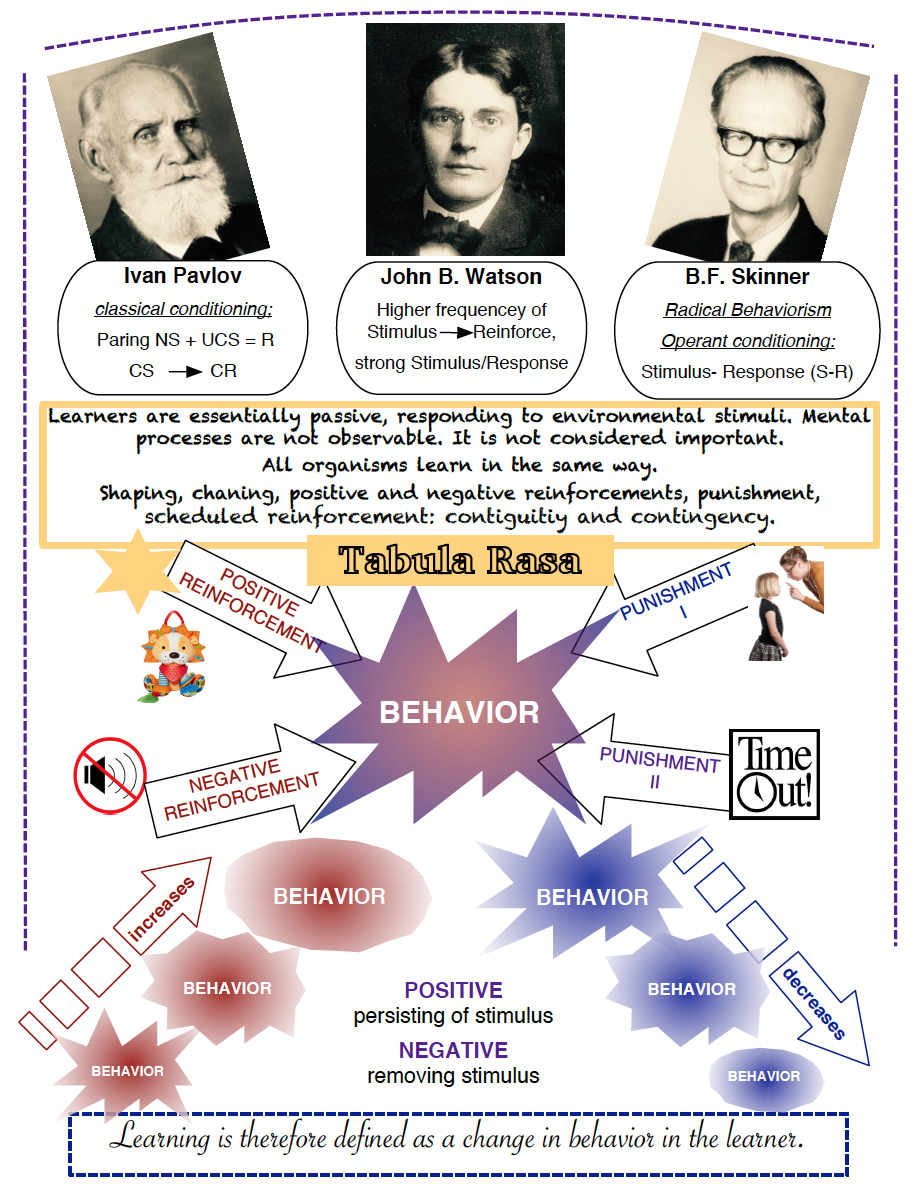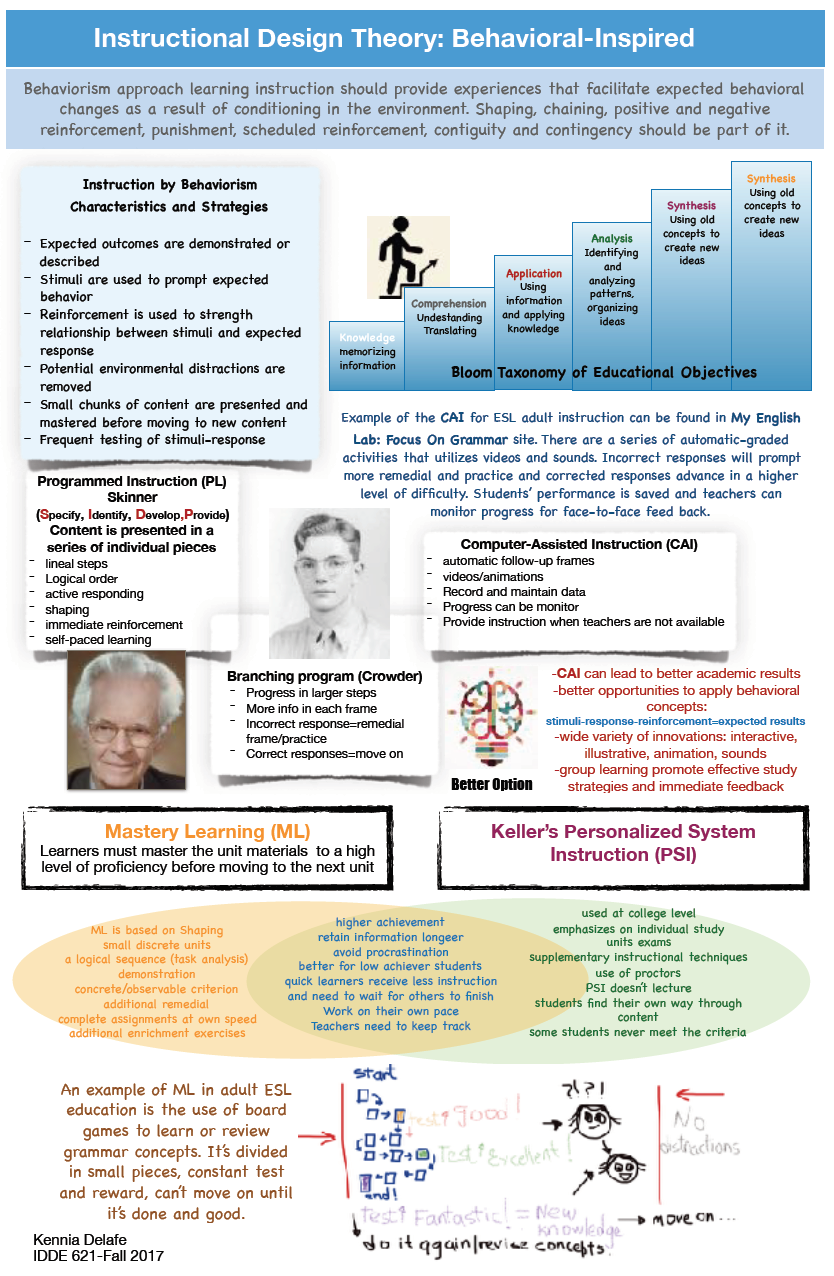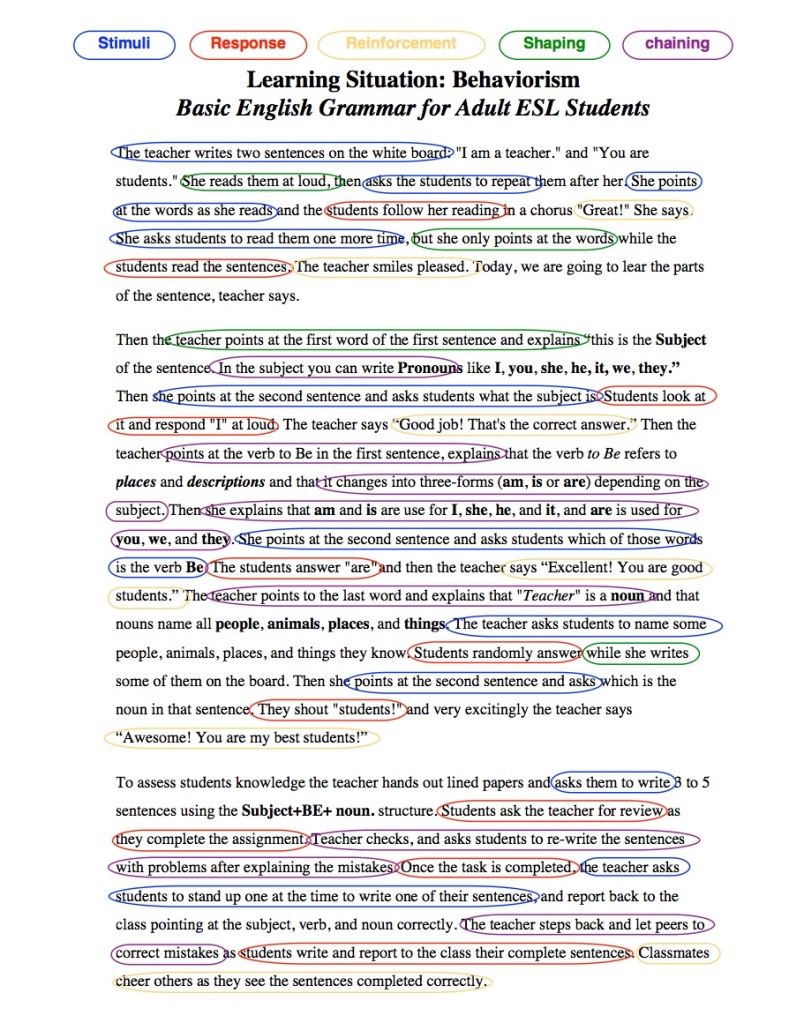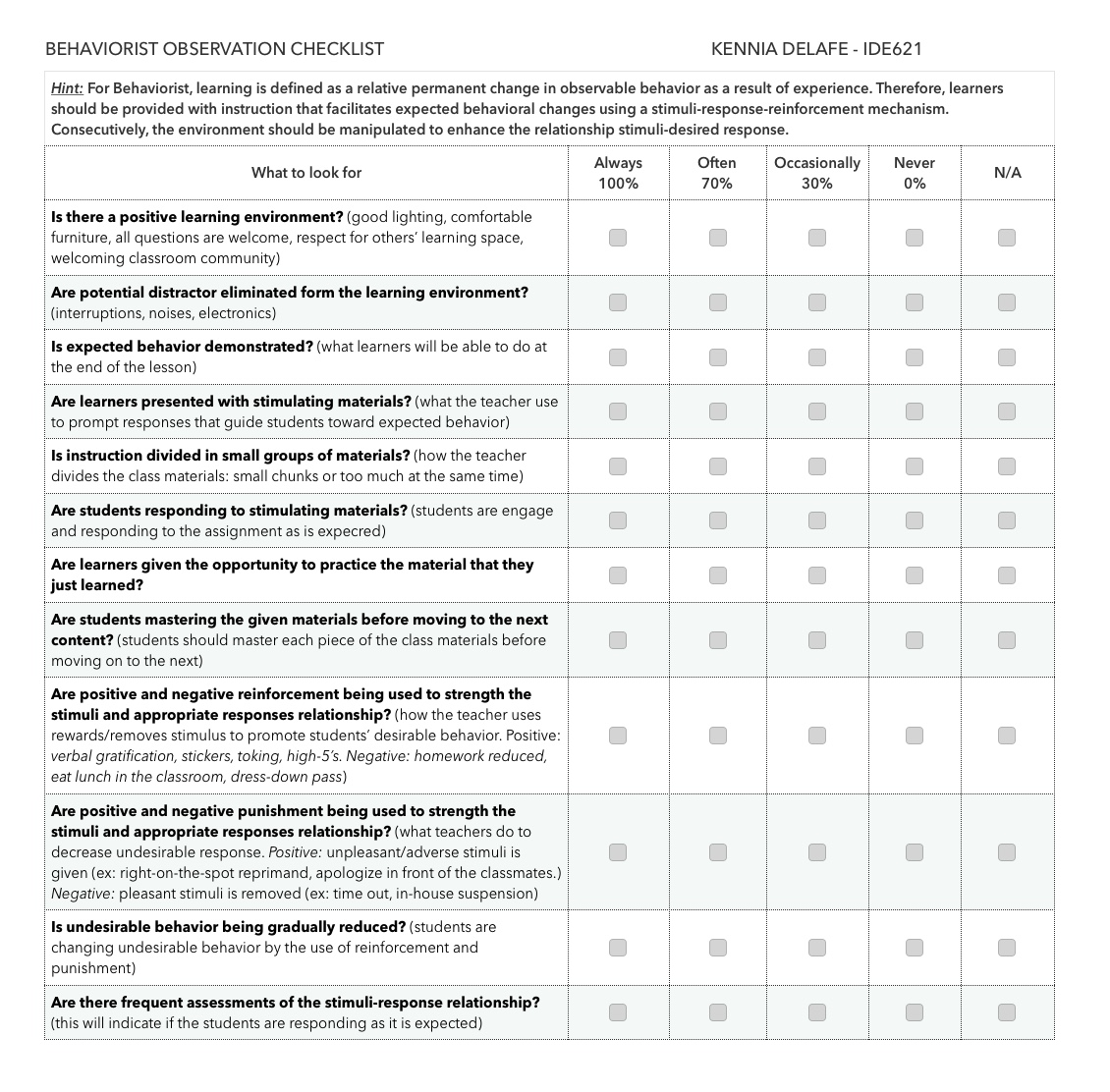What is Learning according to Behaviorism Theory?
Learning is a relatively permanent change in observable behavior as a result of experience. It is a strong relationship between specific stimuli, desired response, and reinforcement.
Page Content
Infographic 1
Infographic 2
Learning Situation
Observation Checklist
Reflection
Behaviomism Leaning Theory
click on the following link to for infographic’s full view: Infographic-behaviorism.pdf

Click on the following link to access to Behaviorism YouTube videos
Behaviorism Part 1: Pavlov, Watson, and Skinner
Infographic 2
Click on the following link to access the pdf file: Infographic-Behaviorism2.pdf

Learning Situation
Title: Basic English Grammar for Adult ESL Students
The teacher writes two sentences on the whiteboard: “I am a teacher.” and “You are students.” She reads them at loud, then asks the students to repeat them after her. She points at the words as she reads and the students follow her reading at loud. “Great!” She says. She asks students to read them one more time, but she only points at the words while the students read the sentences. The teacher smiles pleased. Today, we are going to learn the basic structure of a sentence, the teacher says.
The teacher points at the first word of the first sentence and explains “this is the Subject of the sentence. In the subject you can write Pronouns like I, you, she, he, it, we, they. Then she points at the second sentence and asks students what the subject is. Students look at it and respond ‘I’ at loud. The teacher says That’s the correct answer!
Then the teacher points at the verb To Be in the first sentence and explains that it refers to places and descriptions and that it changes into three-forms (am, is or are) depending on the subject. Then she explains that (am) is used for the subject I, (is) is used for the subjects she, he, and it, and (are) is used for you, we, and they.
She points at the second sentence and asks students which of those words is the verb Be. The students answer, ‘are’ and then the teacher says “Excellent! You are good students.” The teacher points to the last word and explains that “Teacher” is a noun and that nouns name all people, animals, places, and things. The teacher asks students to name some people, animals, places, and things they know. Students randomly answer while she writes some of them on the board. Then she points at the second sentence and asks which is the noun in that sentence. They shout “students!” and very excitingly the teacher says “Awesome! You are my best students!”
To assess students knowledge, the teacher hands out outlined papers and asks them to write 3 to 5 sentences using the Subject + BE + noun structure. Students ask the teacher for review as they complete the assignment. Teacher checks, and asks students to re-write the sentences after explaining and correcting mistakes. Once tasks are completed, the teacher asks students to stand up one at the time to write one of their sentences on the boar, and report back to the class pointing at the subject, verb, and noun. The teacher steps back and lets peers correct mistakes as students write and report to class their completed sentences. Classmates cheer others as they see the sentences completed correctly.
Learning Situation According to Behaviorists
Click on the link to open the Case-Study pdf file: CaseStudy-Behaviorism.pdf

Observation Checklist
Click on the following link to access to the pdf file: BehavioristObservationChecklist.pdf

Self-Reflection
Behaviorism Learning Theory is quite impressive. While I was going through the lesson, readings, assignments, and other learning instruments used in this class, I was engaged by the way many of the details of the theory are present in my daily life as a mother, wife, and teacher. There was a class exercise where we needed to complete a booklet with many questions about behaviorism theory, and as we were finishing each item, we could experience either a positive reinforcement by moving ahead few pages or a negative one by going to the following page a reading more and answering more questions. This behaviorism learning technic is called Mastery Learning.
Surprisingly, I started to pay attention to what I do in my daily routines, and I realize that there are many times in which I expect a response to prompting stimuli and I reward it or not depending on the reaction. Others where positive and negative rewards and punishments are the way of going without even thinking. It just comes automatically. Also, I found myself conditioning the environment when homework time approaches at home, so my children do not experience any interruption when studying. I guess that we just use what worked with us while we were growing up, and we keep and pass it on to the next generation.
Now, do all that make me a behaviorist? I do not believe that all these actions condition me somehow to accept that behaviorism learning is the single resource for acquiring knowledge. For instance, It lacks the social interaction that is so important in my life, the possibility of experiencing education in many different ways so it stays longer, the process I go through my end-of-the-day reflection, and the fact that there is always another way to solve problems without conditioning the way or each situation to get a specific answer. There are usually many different answers for a unique situation.
Therefore I believe, even though I see myself acting or using techniques that behaviorist will use, I see myself more on the side of interacting with the medium of knowledge to learn. I do not agree with the idea that to acquire the knowledge I need to condition the learning environment and use the stimuli-response-reinforcement method strictly. I think it may work for some specific individuals’ learning style, but a combination of different learning approaches may bring better results.
Behaviors in Action
Examples of Behaviorism in the workplace and Schools. Click on the following links for a YouTube Video and other interesting sites.
Behaviorist Theory of Second Language Acquisition
Examples of Behaviorism in the classroom